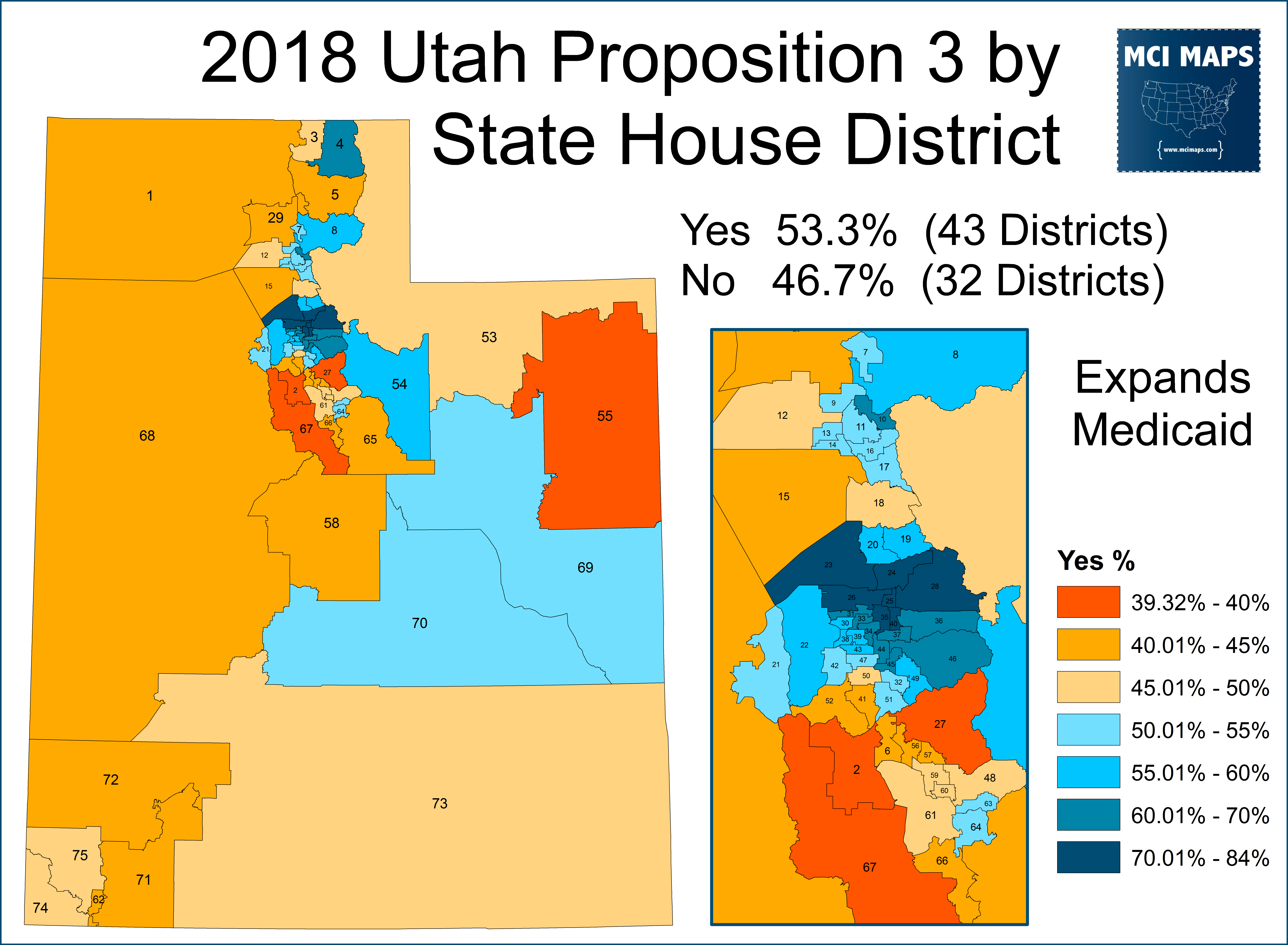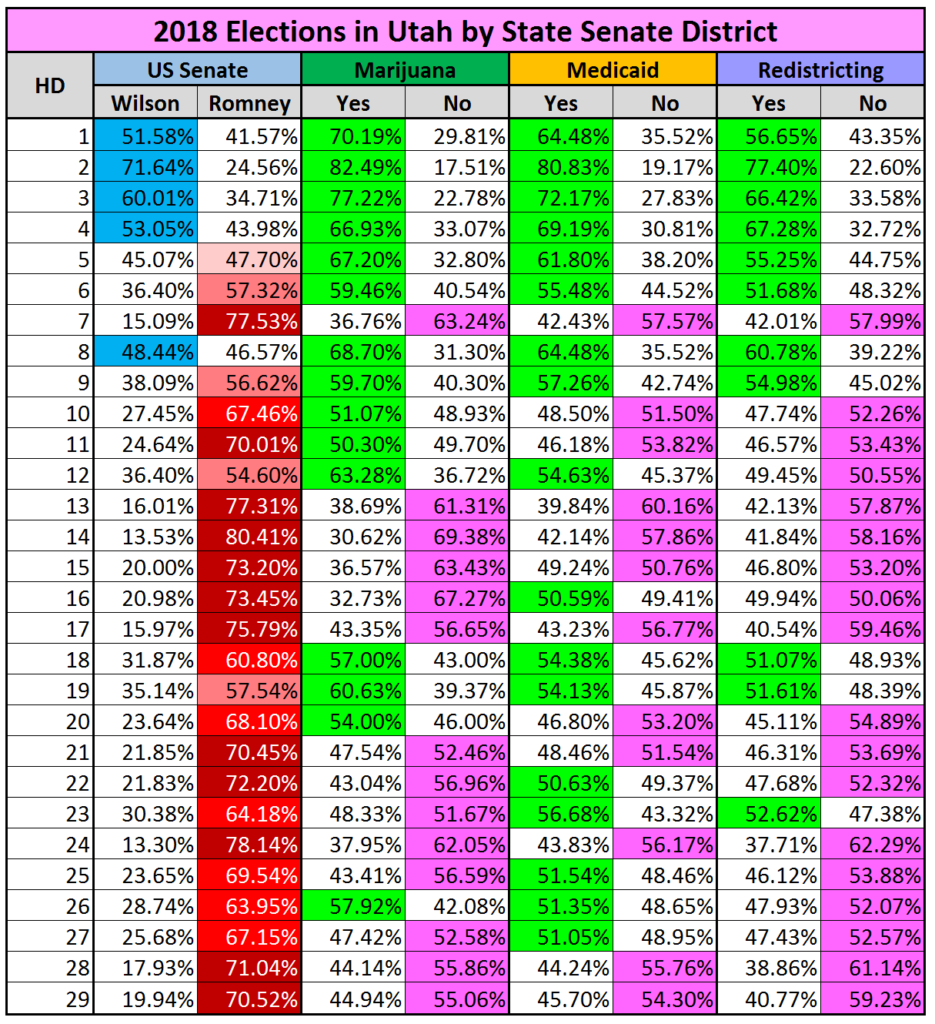Utah passed three left-wing ballot measures in 2018. A measure establishing medical marijuana, one expanding medicaid, and another establishing independent redistricting. However, in recent weeks the legislature of Utah has weakened the marijuana law and is debating undermining the medicaid expansion. Redistricting could be next. It is especially jarring to see a legislature dominated by Republicans undermine the decision made by a majority-Republican voting population. One thing seems especially clear, the legislature of Utah is much more rigidly conservative than its voters are.
Utah’s Mormon Conservatism
Utah has always been a fascinating state in the political realm. The state is very conservative, but it is a conservatism rooted in its strong Mormon heritage. Utah is the lone majority-Mormon state in the nation, and sits in the center of the Mormon population in America.
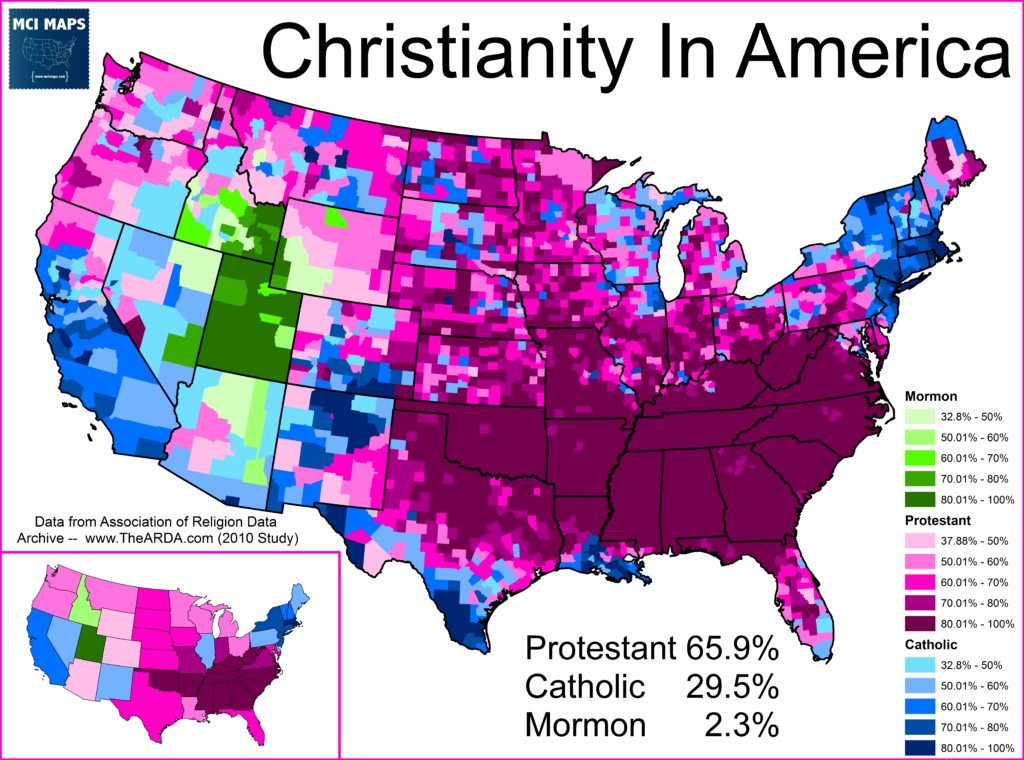
Utah is currently estimated to be around 63% Mormon. The share of adherents has been slowly falling as Utah grows in population. However, Mormonism still heavily influences the state’s politics. Over 90% of the state legislators are members of the Mormon faith.
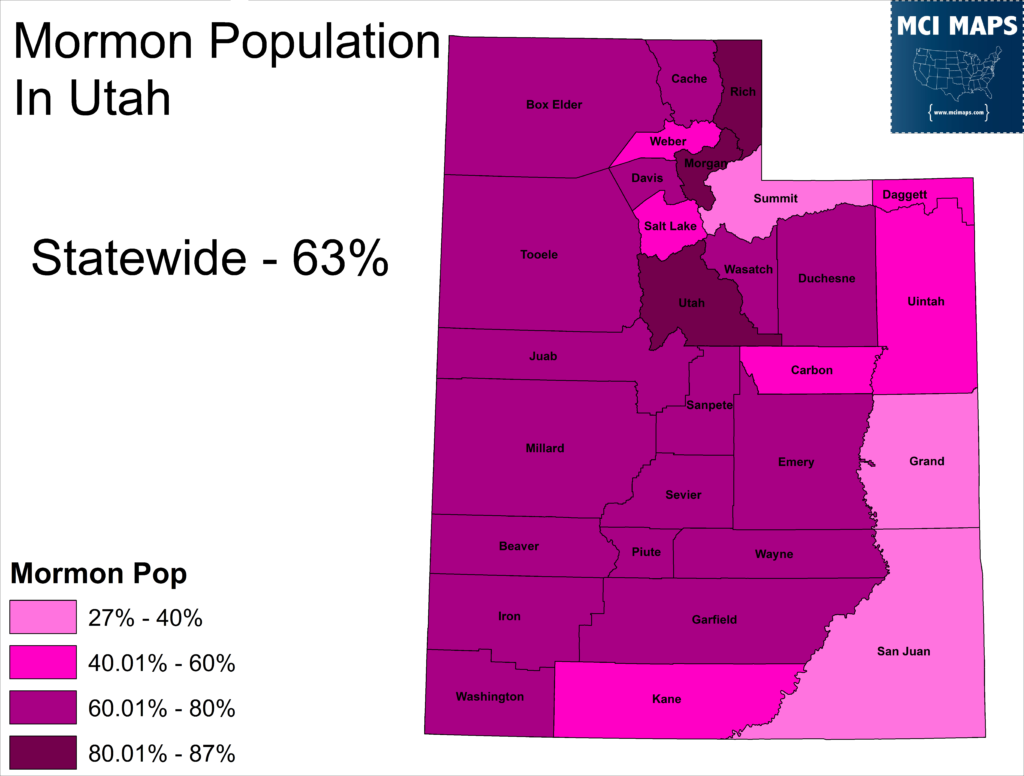
The Mormonism of Utah results in a state that socially conservative, steadfast Republican, and fairly economically conservative. However, the state’s Mormonism also results in a state that supports environmentalism, aid to the needy, and a more liberal immigration viewpoint. Mormons were the strongest of the anti-Trump movement and saw the largest 3rd party share of the vote in 2016 in addition to one of Trump’s worst primary showings. Trump handily lost the GOP caucuses to Ted Cruz and John Kasich. In the general. 21% of Utah voted for Mormon 3rd party candidate Evan McMullin. 2016 saw Utah voters strongly dislike both Clinton and Trump.
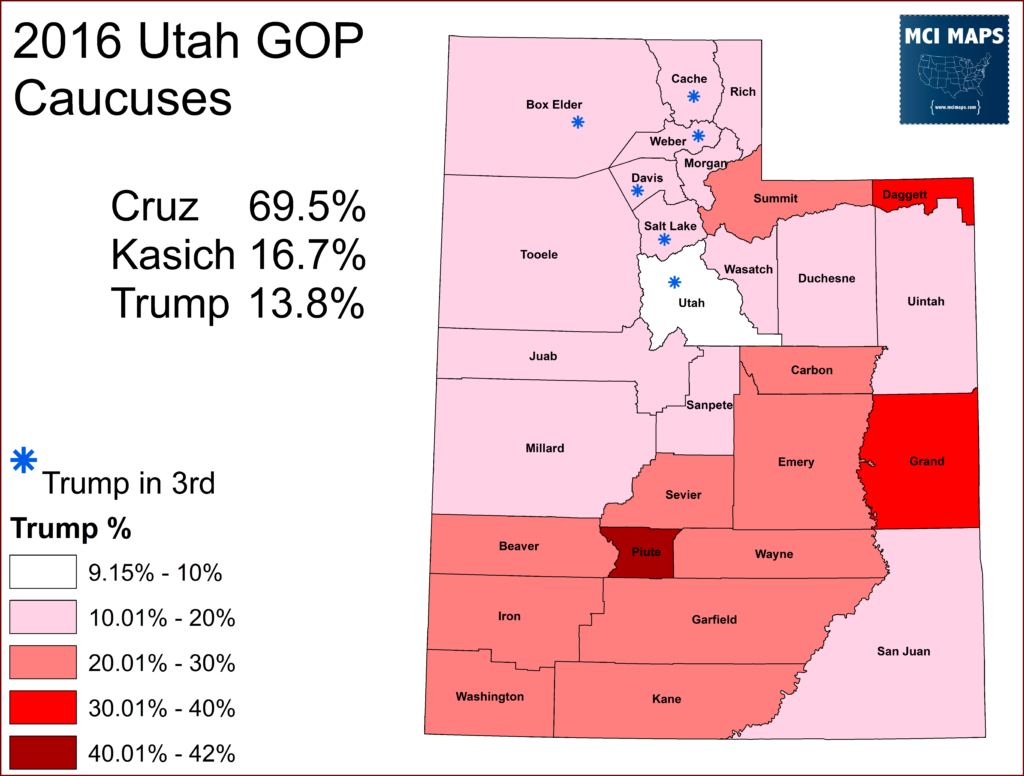

Utah elected a never-Trump Republican in its 3rd Congressional district special election and now has Mitt Romney (who never backed Trump in 2016) as its Utah Senator. The conservatives of Utah are very different from the conservatives of other parts of the nation.
Utah also stands out for having a state house district actually back a third party candidate. McMullin won the district based around Brigham Young University.
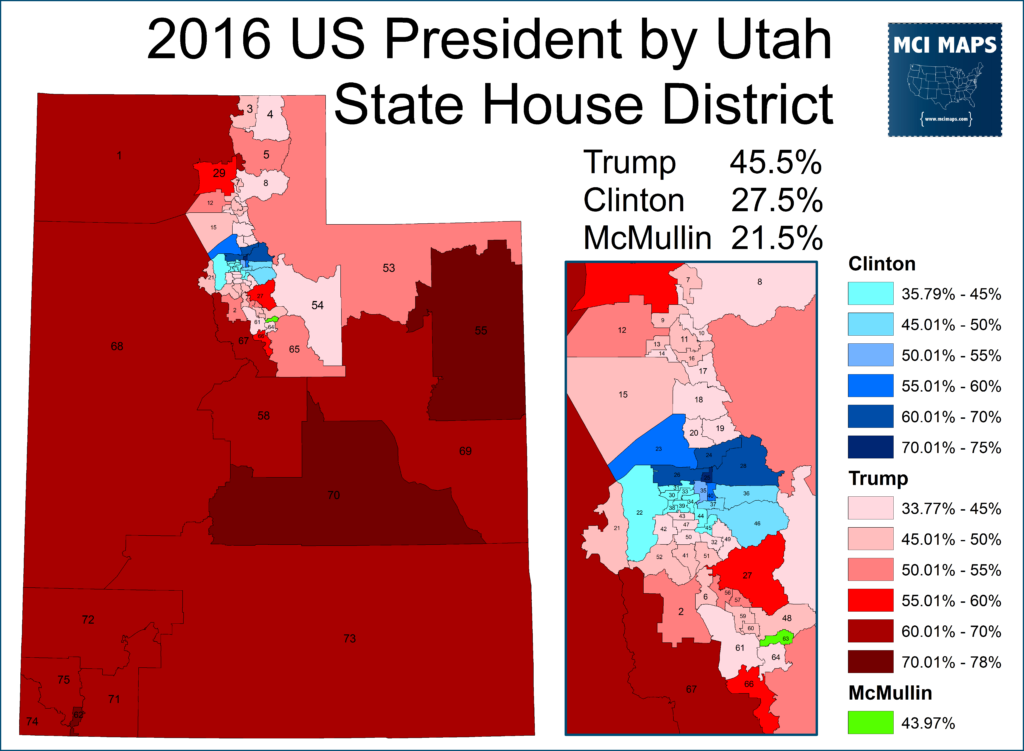
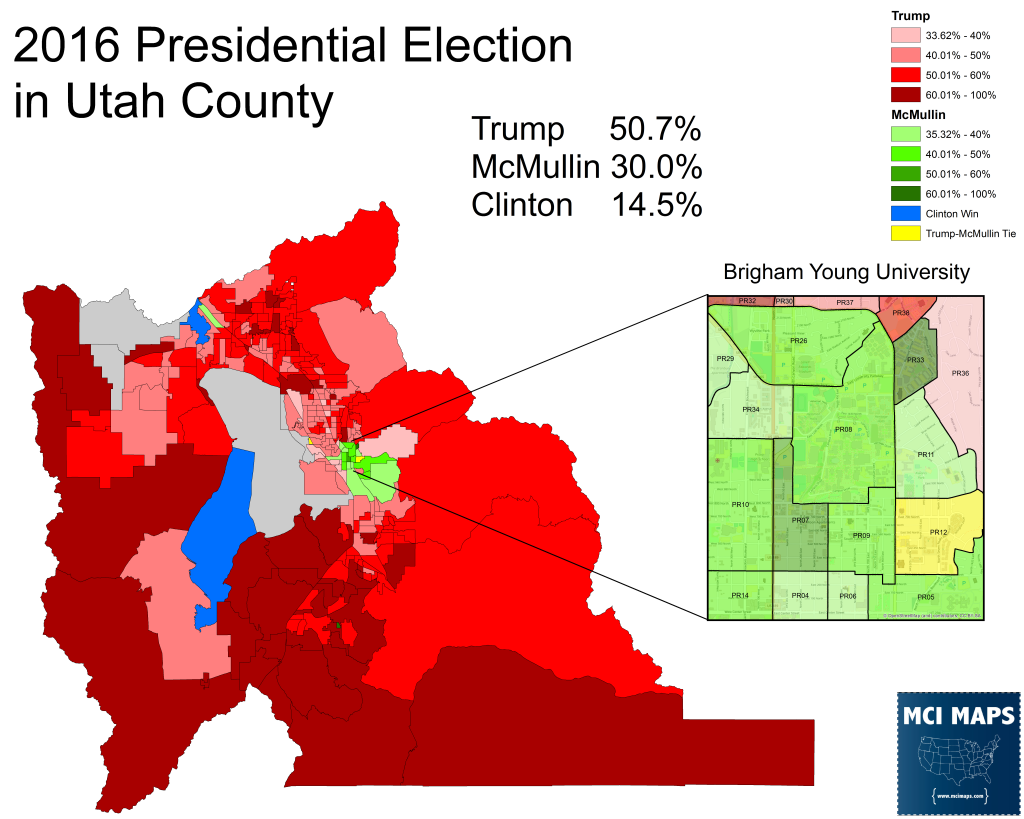
When 2018 came around, politics reverted to the norm in Utah. Mitt Romney easily won the US Senate seat, securing 63% of the vote. Democratic share only rose a few points. Romney’s icy relationship with Trump led to slightly problems on his right but he easily won the primary. He won a vast majority of the legislative districts.
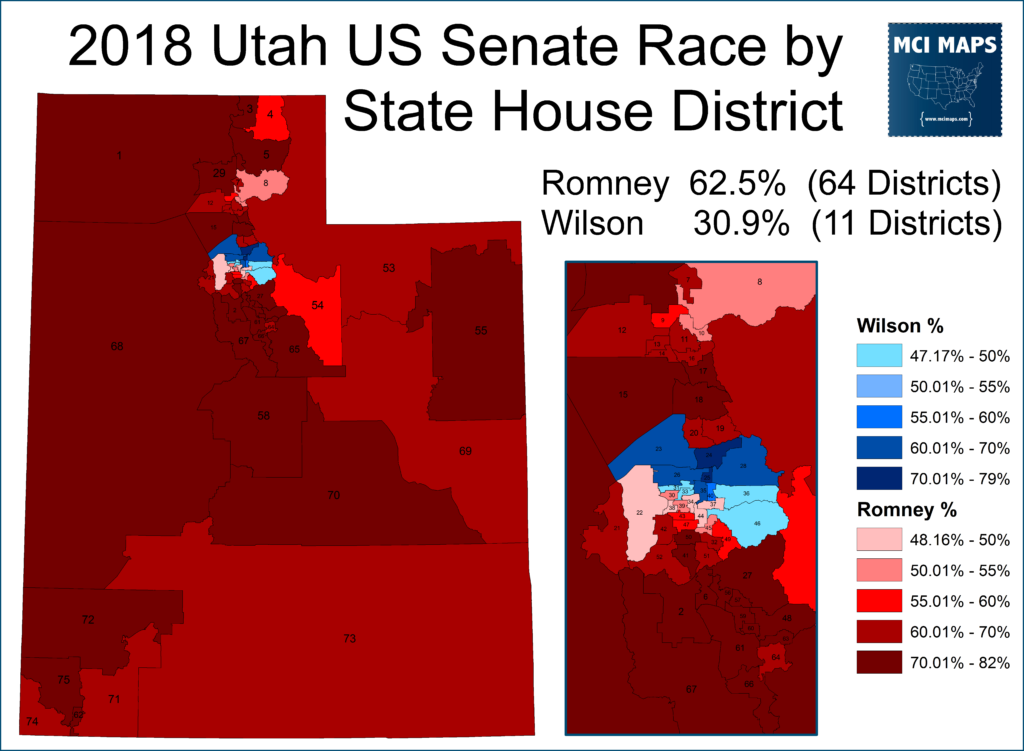
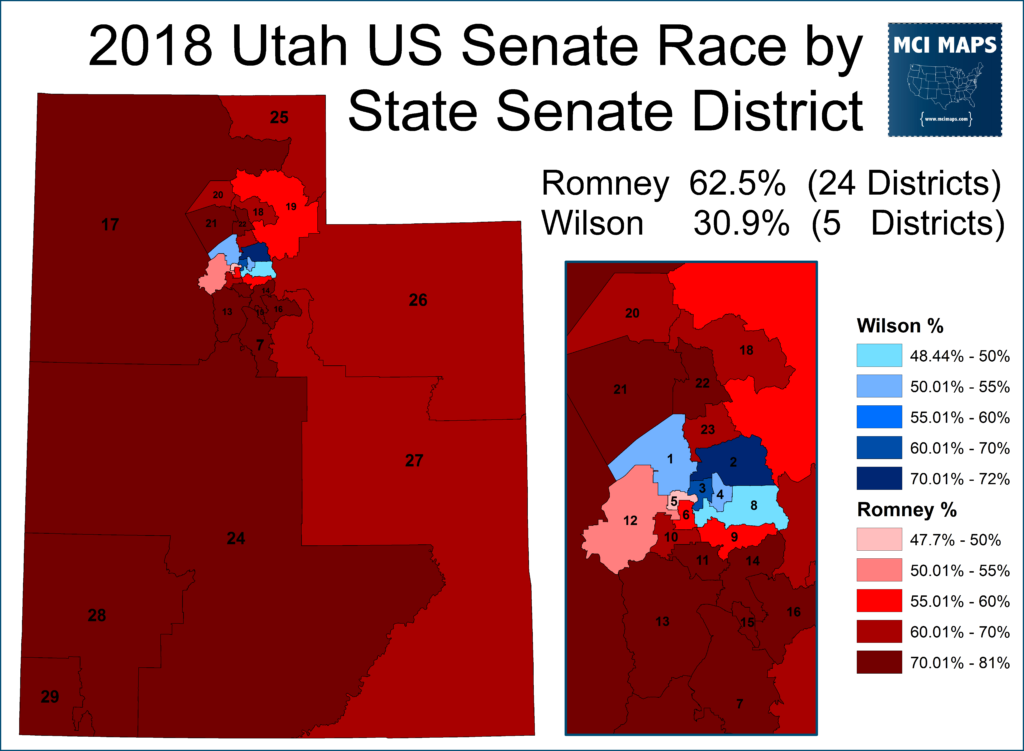
Looking at the Senate race and how the party control of each district lays out, we have a handful of Democrats in Romney districts and one Republican in a Wilson district (in both chambers).
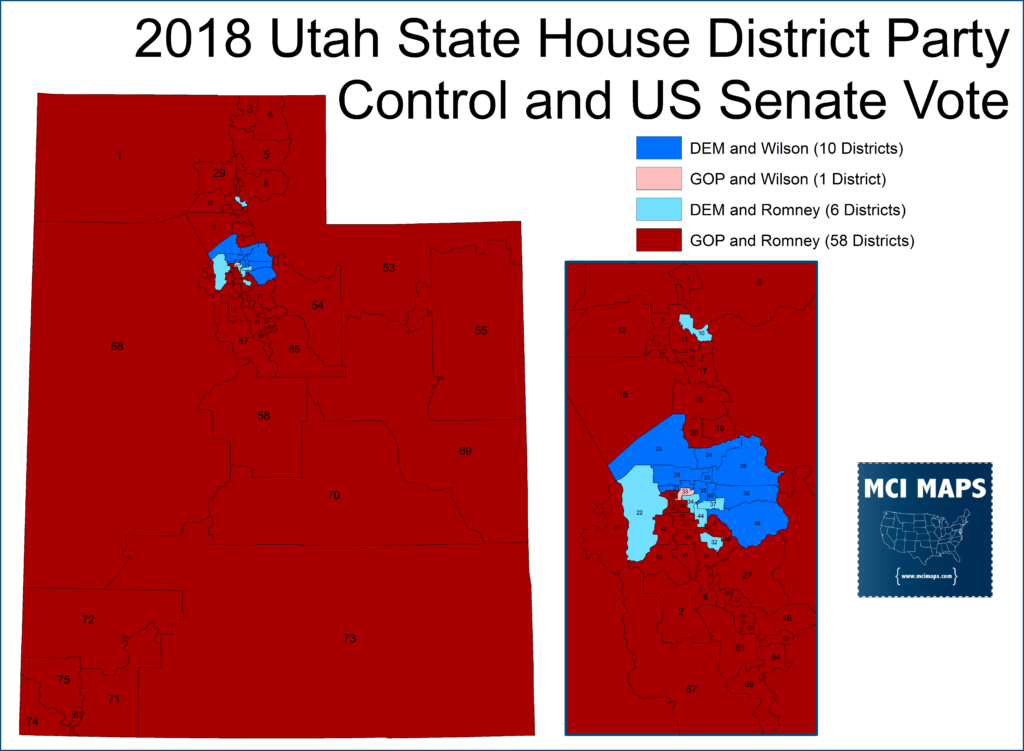
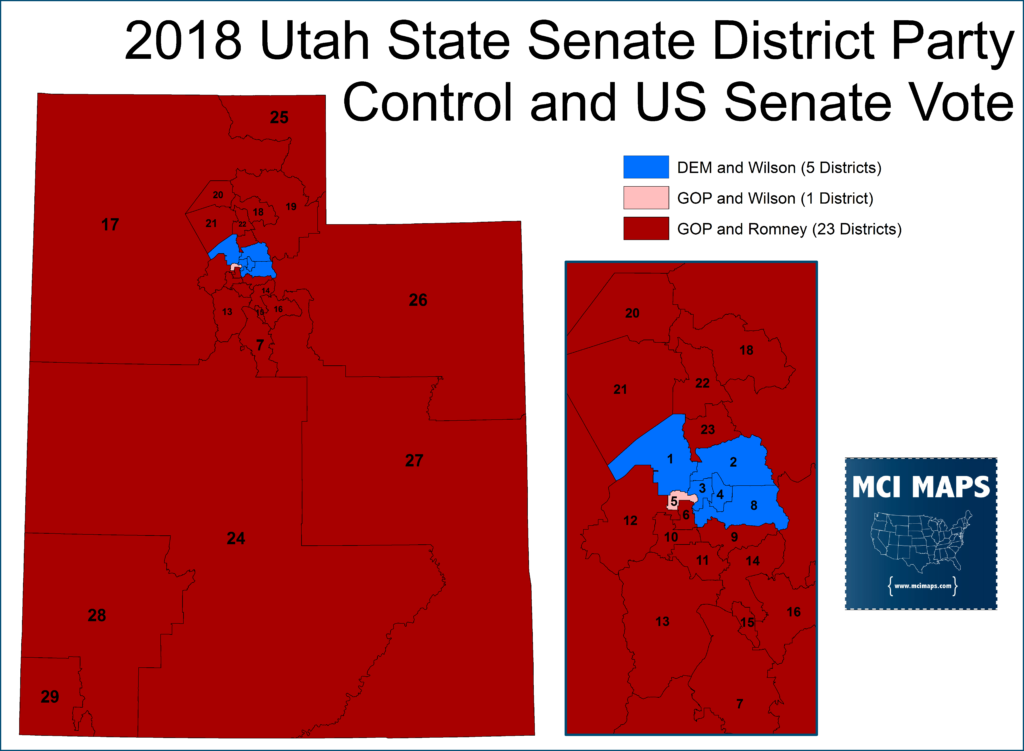
Overall, Republicans maintain a huge advantage in the state legislature. Democrats are not needed to pass legislation or conduct business.
2018 Ballot Measures
Statewide General elections in Utah are almost always a foregone conclusion. Republicans easily win their races. Utah’s 4th Congressional district is normally the only remotely competitive general at the statewide or federal level. However, Utah saw three major ballot measures that all drew large interest and money. All three measures were more liberal/moderate policies that the Utah legislature had not taken up. The measures were not constitutional amendments, however, and risked the possibility of being overturned by the state government.
Proposition 2: Medical Marijuana
A medical marijuana bill was pushed via ballot initiative and passed by 5%. It won a majority of state house districts and just barely a majority of state senate districts. The district was heavily rejected in GOP suburbs in Utah County and was opposed by the official Mormon Church. The measure actually did better in many rural areas than in GOP suburbia. It was especially strong in the Salt Lake region and the scattered cities of North Utah.
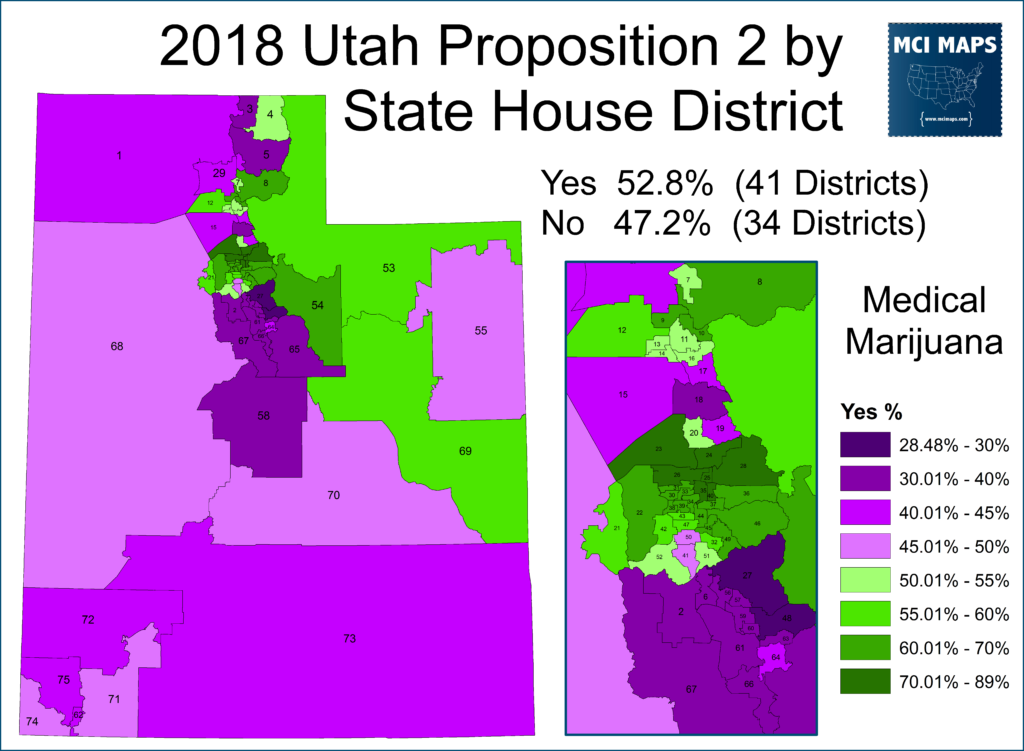
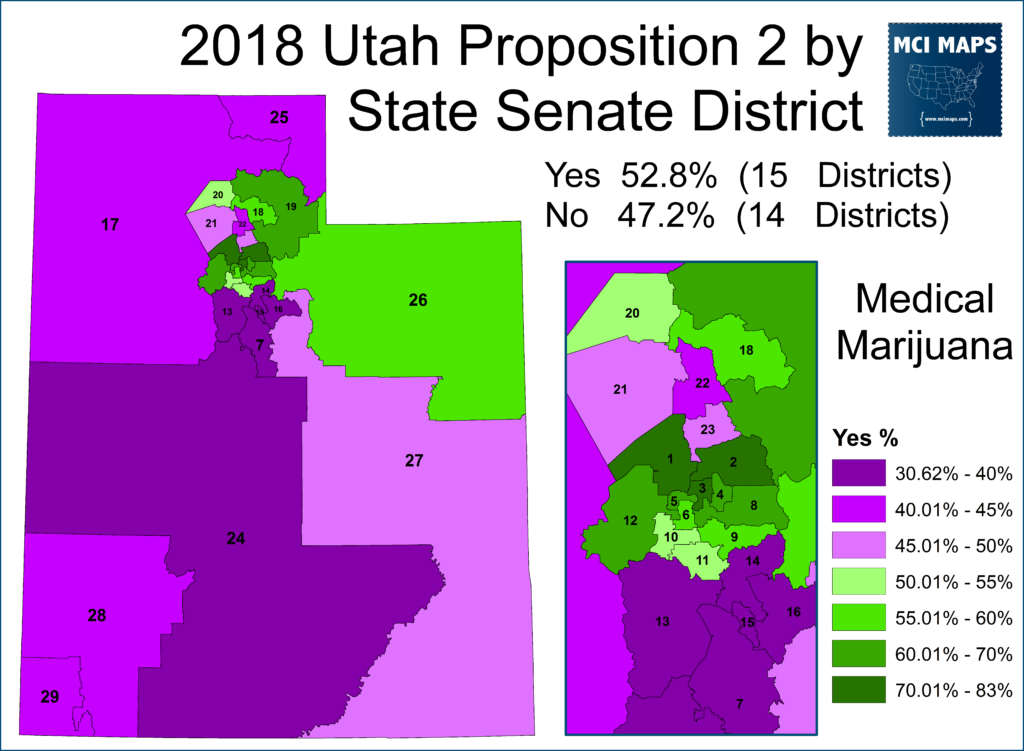
The legislature was called into special session in December to tweak the law. They kept the basics intact but limited dispensaries and stripped the provision to allow someone to grow their own plants. It also altered the illness that qualified. The legislation passed largely on party lines.
Proposition 3: Medicaid Expansion
Prop 3 expanded medicaid in the state, applying to folks up to 138% of the federal poverty level. This measure passed by 7 points and did better in rural regions than marijuana had. It won a good majority of both house and senate districts.
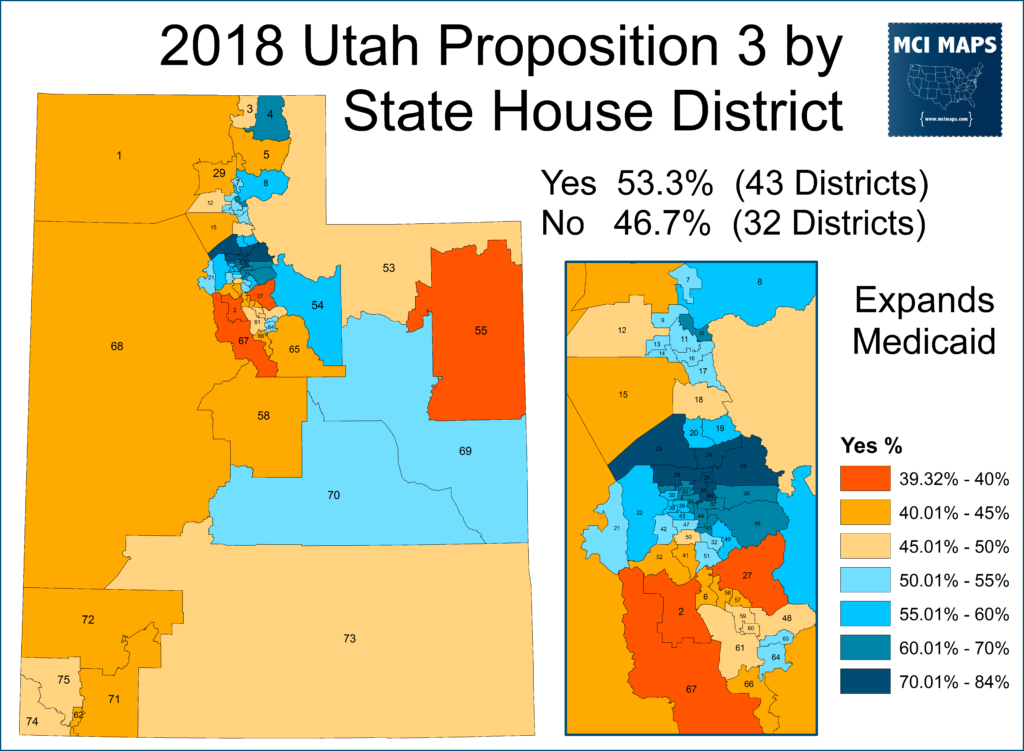
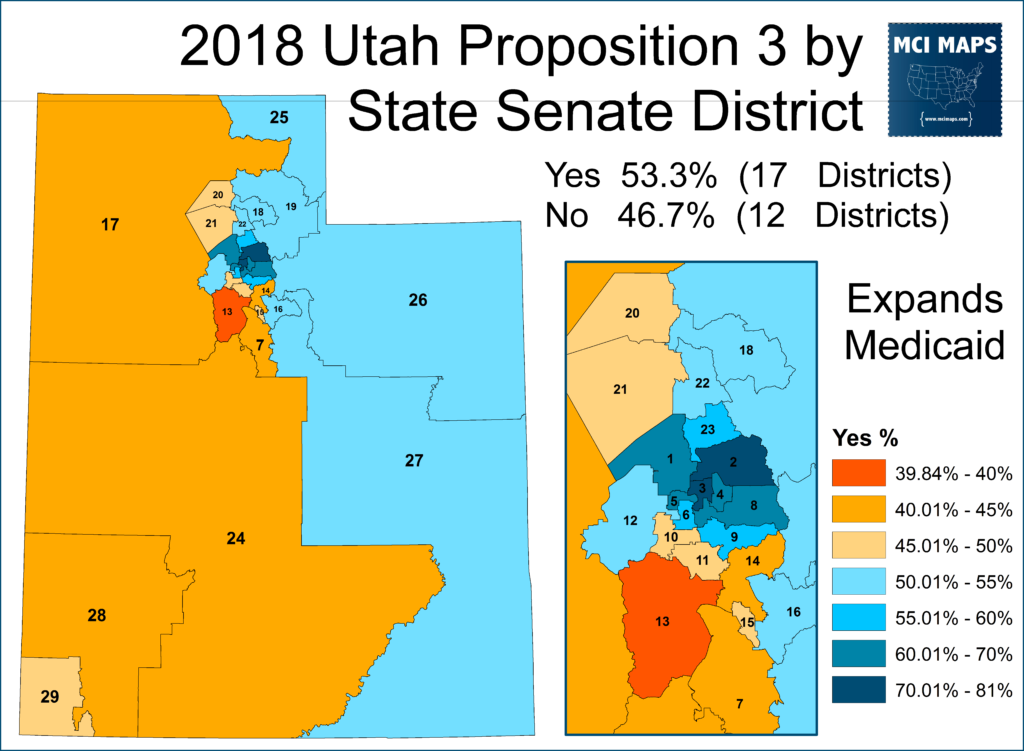
Already talks are underway to undermine the law. Lawmakers want to take the medicaid level to just 100%. They argue the sales tax extension that is part of the measure isn’t enough money – but their is debate about that. The fight for this is going on right now.
Proposition 4: Independent Redistricting
Prop 4 squeaked by Utah. This measure would establish and independent redistricting commission. It has been long argued that the Congressional lines in Utah are gerrymandered. Rather than create a Salt Lake County district (which would be Democratic) lawmakers continue to divide the county 3 ways to split up the Democratic vote. Similar issues have been raised about the legislative lines. The measure barely passed, getting 50.3% statewide. It won overwhelmingly in Democratic areas in some GOP suburbs – but it notably lost a majority of legislative districts.
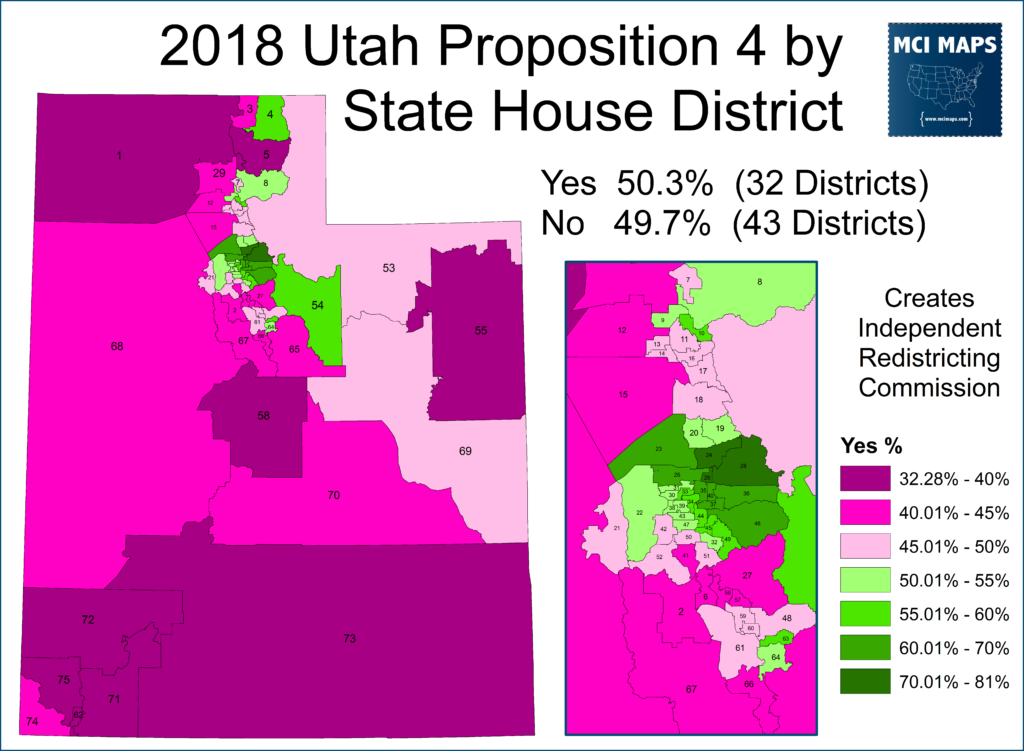
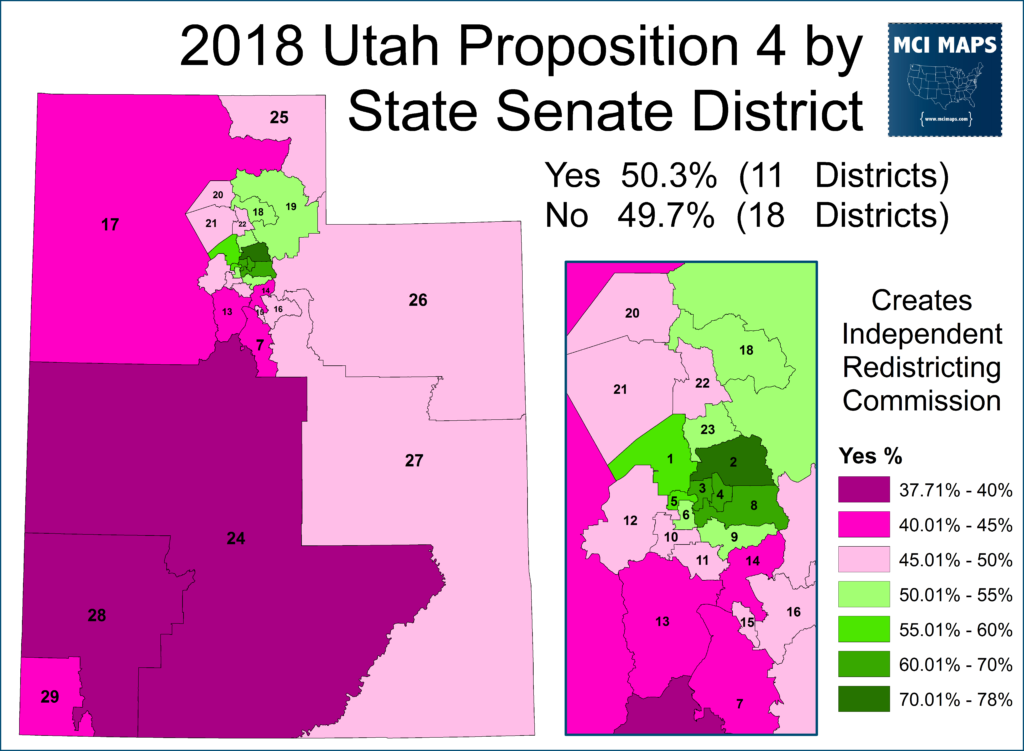
Considering propositions 2 and 3 won a majority of districts but still face the ire of lawmakers, there is reason to be concerned about the fate of Proposition 4.
Conclusion
Utah’s voters, who are only 30% Democratic at best, saw fit to support several measures that Democrats long backed and that divides Republicans. However, the GOP legislature of Utah is seeing fit to defy the will of their voters. What this means for Utah moving forward remains to be seen. But right now it is an interesting fact that despite the actions of the legislature, Utah’s voters are not as “conservative” as their Dem vs GOP results lead one to believe.
*NOTE* – Below you can find the breakdowns of the 2018 results by house and senate district

